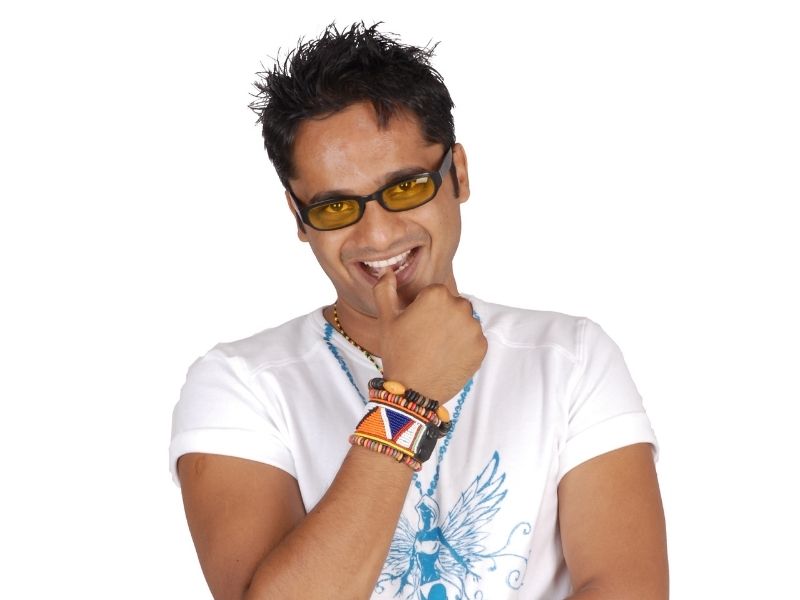A modern approach to learning Hindustani classical music
Mumbai-based Furtados School of Music (FSM) (estb. 2010) offering western and Indian classical music education through its in-school curriculum and coaching centers across India introduced its new Indian vocal course, ‘Sangeet is Fun’ last September. Conceptualised and created by singer, music composer and kids’ music specialist, Chin2 Bhosle, the course aims to reignite the passion for Hindustani vocals amongst the youth. In conversation with Education World’s Dipta Joshi, Chin2 Bhosle, grandson to the legendary songstress Asha Bhosle, touches upon music pedagogies that work in today’s fast-paced lifestyle.
1) Why is there a need to change the old technique of teaching/learning Hindustani vocals?
A) Traditionally the student might explore the finer nuances of just one note for two-six weeks after which he moves on to other notes, exercises (like alankars) and then bandishs (or short musical pieces) and finally raags. Some teachers could take as long as five years before moving on to the next raag. The traditional method of teaching has its merits but the painful fact is that the modern learner is not built for the traditional method of learning. Many young students love singing but refrain from exploring Indian vocals because they perceive it as boring and not ‘cool’ vis-a-vis western vocals. This is a sad loss to not just our art but also an important part of our culture.
2) How does FSM’s new Indian vocal curriculum, ‘Sangeet is Fun’ differ from traditional Hindustani vocal pedagogy?
A) Our Indian vocal curriculum has been designed to first draw the person towards the subject and fall in love with it – because once you love the subject, all its complicated concepts, techniques, etc. are accepted and surpassed much more positively. It makes learning fun and relevant for today’s student by inculcating the best of both worlds – the traditional approach and the proven pedagogy of western music techniques and styles of teaching. The curriculum can be taught over 18 to 24 months and the classes includes tools like vocal exercises, note reading, playing and accompanying yourself (learning chords), composition, rhythm readying etc.
Delivered by specially trained teachers across the country, the course focusses on making students singers as well as performers, composers, lyricists and songwriters – something very relevant to today’s music scenario. And needless to say, our students will be exposed to all the necessary tools and techniques that would help strengthen their vocal foundations and learn Hindustani vocals.
3) What challenges did you face while designing FSM’s Hindustani classical vocals course?
A) The biggest challenge was to keep the goodness of the traditional methodology whilst making it engaging and relevant for the modern learner. For instance, though bandish’s are the traditional approach towards learning raags, the lyrics and approach needed to be something that today’s generation
could identify with. I also conducted workshops with over 100 teachers across Mumbai, Pune, Delhi and other cities in order to help music teachers overcome their initial scepticism regarding the new teaching methodology. For me, getting a stamp of approval from Ashaji (the singer Asha Bhosle is his grandmother) was like the cherry on the cake. She was very intrigued and totally endorsed the modern approach.
4) There is a growing trend of learning Hindi films songs that have a classical base. Comment.
A) Most older learners who cannot cope with the demands of disciplined riyaaz (daily practice) the art requires, prefer a more toned down, light classical music approach instead of the pure classical music approach. With its focus on voice control, understanding of pitch, movement, ornamentation through alankars (melodic signing of notes that embellish the composition) etc. light classical music has gained popularity amongst Hindi or Bollywood film songs and indeed across all Indian languages. Light classical music seems to be the logical and practical approach to attracting music lovers in today’s tech-inspired, fast-paced life.
Also, unlike the earlier era where Hindi film singers like Asha Bhosle or Mohamed Rafi had to get their breath control, singing, emotion, pitch etc. perfect because every mistake meant the song needed to be sung from the beginning, today all you need to do is to deliver well ‘emotionally’ as technological innovations in the recording industry now allow songs to be sung in multiple takes with enough scope for modification of words and pitch correction. Today, 95 percent of Hindi film songs don’t require a really strong classical base and learning light classical singing can provide you with enough tools to get there.
5) Could one hope to get the visharad degree after completing the FSM’s curriculum?
A) Sangeet visharad is basically a Bachelor of Arts degree in music and while our syllable puts you on the path to be a good singer, you will need to work towards and meet the requirements of accredited examinations held by the Miraj-based (Maharashtra) Akhil Bhartiya Gandharva Mahavidyalaya Mandal to earn a certificate. Students can apply and appear for the prarambhik (elementary), the visharad (equivalent to a bachelor’s degree), alankar (equivalent to a master’s degree) or a sangitacharya (a doctor’s degree) exams.
